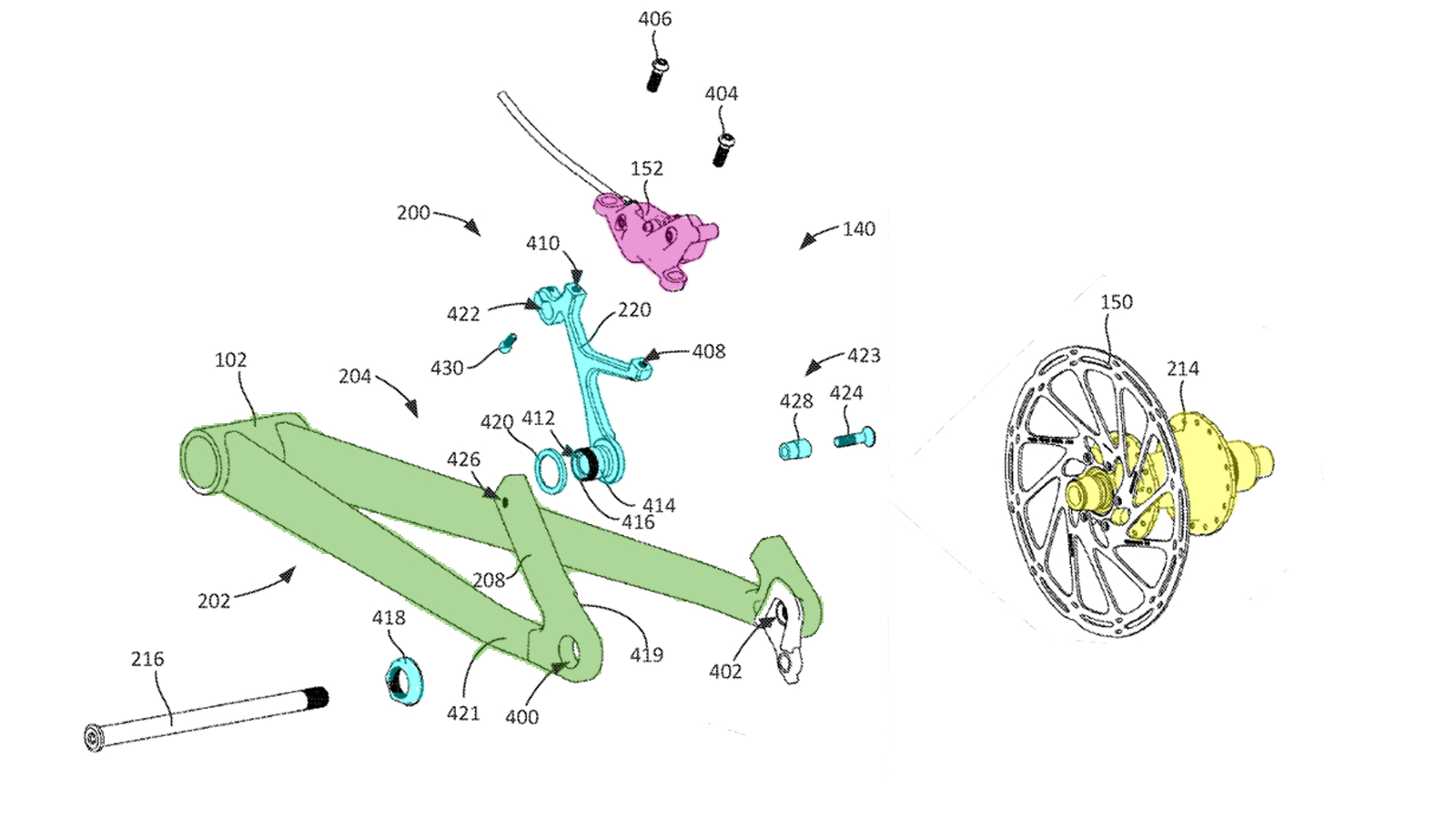First they came for your derailleur hanger, is SRAM now coming for your brake mounts?
A new SRAM patent appears to show a brand-new concentric axle-mounted brake adapter

While SRAM's move to kill off the derailleur hanger might have ruffled a few feathers, the thinking behind mounting a derailleur to the axle makes a lot of sense. SRAM's T-Type hangerless design simplifies setup and improves durability over a standard hanger design and we suspect that it will be quickly adopted by MTB component manufacturers.
That's not just speculation from the crystal ball caressing tech writers at Bike Perfect, we have previously uncovered patents showing that Shimano and TRP are working on hangerless designs, although whether they will be compatible with SRAM's mounting system remains to be seen.
But why stop there...
After a bit of rummaging, we have uncovered a patent that appears to show that SRAM is working on an axle-mounted disc brake mount. Rather than mounting the caliper to the chainstay or seatstay, the diagrams show a bracket that is co-axially mounted to the wheel axle and bolted to the inside of seatstay.
From what we can gather from the patent, the good news is this setup shouldn't affect hub or brake standards, cueing a big sigh of relief from everyone. It will require frame manufacturers to alter the design of their non-drive side rear dropout in order to house the mounts sleeve which extends into the axle opening of a frame. Frame designers will also need to add a threaded opening on the inside of the left seatstay to which the mount is bolted.

Arguably co-axially mounting a brake caliper isn't new. Downhill bikes with floating brake arms have been axle-mounting brake calipers since the 90s and similar designs are still used today, most notably the honking piece of metal hanging off the back of Danny Hart's Prototype Cube TWO15 DH Bike which he is racing this year. SRAM's design is fixed in place with no mention of bearings or bushings in the patent so it couldn't be used as a floating brake arm, so what's the point?
Frame-mounted brake bosses rely on manufacturer tolerances and a well-faced brake surface which means there is always some manual setup required. Mounting the caliper on the axle and in line with the disc rotor attached to the hub should make the caliper setup and alignment considerably easier.
Making the brake mount a removable piece of hardware opens up the potential for brake standards to be interchangeable between Post Mount and Flat Mount. Using additional hardware could also simplify frame manufacturing as well as manufacturers don't need to align brake bosses when building frames.
Some frame manufacturers may be less enthusiastic. Bikes like the Zerode Katipo or Commencal Meta AM that use linkage-driven single-pivot have a seat stay-mounted pivot that could interfere with the top mount of this bracket. There could be creative workarounds if required, it just depends on how much the manufacturers want it.

Why are SRAM doing this and when will we see this tech on our bikes?
It's hard to speculate on whether this concept will become commercial but the design makes a lot of sense. SRAM is at the behest of the frame manufacturers though as they require frames to feature the hardware required to run it.
The pitch is not dissimilar to SRAM's UDH hanger standard which had a clear benefit for both frame manufacturers and customers alike and was quickly adopted by the main players in the industry for its simplicity. This brake mount could do the same for braking, potentially simplifying frame manufacturing and setup which is a big bonus.
Whether or not this brake mount is adopted in the future, it's interesting to see SRAM applying their co-axial mount theory used on the T-Type transmission to brakes. However, It's not clear to me why they would invest time and money in such a project beyond name recognition for a potentially easier brake setup.

Graham Cottingham joined the BikePerfect team as our senior tech writer in 2020. With over 20 years of riding experience, he has dabbled in downhill, enduro, and gravel racing. Not afraid of a challenge, Graham has embraced bikepacking over the last few years and likes nothing more than strapping some bags to his bike and covering big miles to explore Scotland's wildernesses. When he isn’t shredding the gnar in the Tweed Valley, sleeping in bushes, or tinkering with bikes, he is writing tech reviews for BikePerfect.
Rides: Cotic SolarisMax, Stooge MK4, 24 Bicycles Le Toy 3, Surly Steamroller
Height: 177cm
Weight: 71kg
